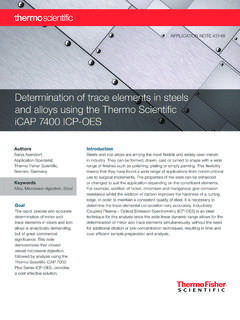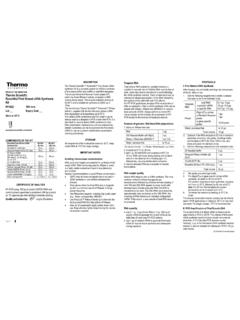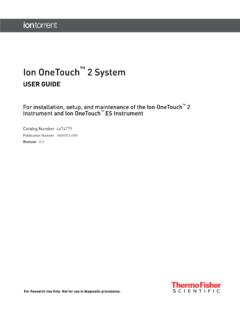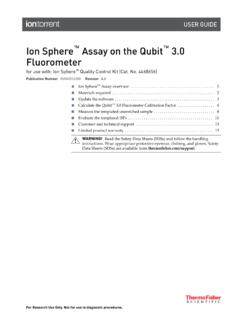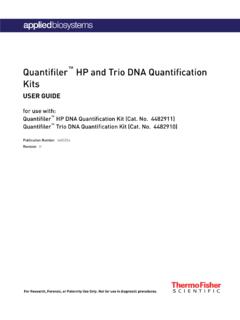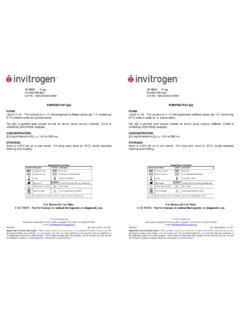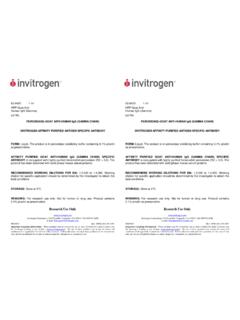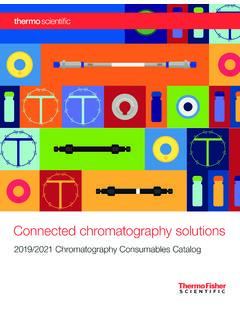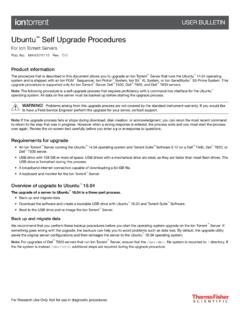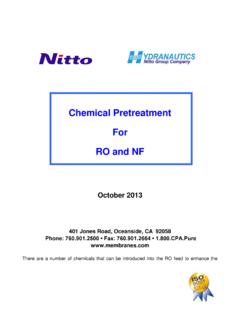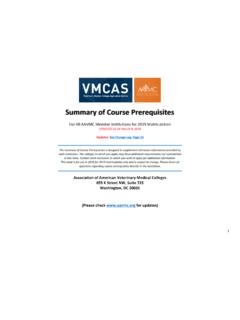Transcription of P rotein preparation handbook - Thermo Fisher Scientific
1 Protein preparation handbookCell lysis | Subcellular fractionation | Protease and phosphatase inhibition | Dialysis | Desalting | Concentration | Purification | Immunoprecipitation | Co-immunoprecipitation | Pull-down2We offer a full range of optimized tools for efficient protein extraction, fractionation and targeted inhibition of unwanted protease and phosphatase activity. Our convenient devices and high-performance affinity resins and magnetic beads enable maximum yield for the purification, enrichment, and cleanup of proteins and antibodies for downstream extractionProtein extraction techniques vary depending on the source of the starting material, the location of the protein of interest within the cell, and the downstream application.
2 Other important considerations include the preservation of protein activity and function as well as the reduction of background effects. Tissue and cell lysis Historically, mechanical disruption has been used to lyse cells and tissues; our gentle, detergent-based solutions have been developed to efficiently lyse cells and enable the separation of subcellular structures without requiring physical disruption, providing high yields of active proteins. Detergent solutions Detergents are frequently used in cell lysis reagent formulation and other protein research methods. Thermo Scientific Surfact-Amps Detergent Solutions are highly purified, precisely diluted (10%) formulations that are ideal for applications or assays that are sensitive to contaminants present in unpurified detergents.
3 Protein stabilization Cell lysis disrupts cell membranes and organelles, resulting in unregulated enzymatic activity that can reduce protein yield and function. To prevent these negative effects, protease and phosphatase inhibitors can be added to the lysis reagents. Numerous compounds have been identified that can inactivate or block the activities of proteases and phosphatases. Thermo Scientific Halt and Thermo Scientific Pierce Protease and Phosphatase Inhibitor Cocktails Tablets and Capsules are broad-spectrum blends in both liquid (100X), solid formats for complete protein protection during cleanupMany detergents and salts used in protein extraction formulations may have adverse effects on protein function or stability, or may interfere with downstream analysis.
4 Therefore, it may be necessary to remove or reduce these contaminants following cell lysis or subsequent sample processing such as protein purification. Dialysis Dialysis is a classic separation technique that facilitates the removal of small, unwanted compounds from proteins in solution by selective diffusion through a semipermeable membrane . Proteins that are larger than the membrane pores are retained on the sample side of the membrane , but low molecular weight contaminants diffuse freely through the membrane and can be removed over multiple buffer exchanges. Traditionally, flat dialysis tubing has been utilized, which requires preparation , and is slippery and cumbersome to handle. Thermo Scientific Slide-A-Lyzer dialysis cassettes and devices are ready to use and designed to eliminate potential sample leakage and maximize ease of use for specific applications.
5 Desalting Size exclusion chromatography (also known as gel filtration) can be effectively utilized for protein desalting. A resin is selected with pores that are large enough for small contaminants ( , salts) to penetrate, but too Extract. Clean up. Purify. upPurifyImmunoprecipitate3small for the protein of interest to enter. This causes the migration of small contaminants to slow as they get trapped in the resin, while the larger, faster proteins emerge from the column first, allowing the protein of interest to be recovered separately from the small molecules retained on the column. Thermo Scientific Zeba desalting products contain a unique resin and are specifically designed to provide consistent performance over a wide range of protein concentrations and sample sizes.
6 High recovery of protein can be achieved even for dilute protein samples. Concentration Protein concentration and diafiltration, similar to dialysis, uses a semipermeable membrane to separate macromolecules from low molecular weight compounds. Unlike dialysis, which relies on passive diffusion, concentration is achieved by forcing both liquid (buffers) and low molecular weight solutes through the membrane by centrifugation, where they are collected on the other side (filtrate). Macromolecules remain on the sample side of the membrane , where they become concentrated to a smaller volume (retentate). For buffer exchange , the retentate is diluted to the original volume with exchange buffer and centrifuged multiple times until the desired level of exchange has been achieved.
7 Our high-performance Thermo Scientific Pierce Protein Concentrators enable rapid sample processing with high protein purificationVarious methods are used to enrich or purify a protein of interest from other proteins and components in a crude cell lysate or other sample. Ion exchange and affinity chromatography are two commonly used strategies for partial or 1-step purification. Ion exchange (IEX) chromatography This purification method enables the separation of proteins based on the protein charge at a particular pH. Since multiple proteins may have similar charges, IEX chromatography generally enables only partial purification of a protein of interest when used early in a multistep purification process.
8 However, IEX resins can also be used during a final polishing step to remove specific contaminants that persist after other purification steps. Typically, proteins bind to the IEX column at low ionic strength and elute differentially by increasing salt concentration or changing pH in a gradient. A cation exchange resin binds to positively charged proteins; an anion exchange resin binds to negatively charged proteins. Ion exchange resins are classified as weak or strong , which refers to the extent that the ionization state of the functional groups varies with pH. Affinity chromatography This purification method is enabled by the specific binding properties of a protein to an immobilized ligand. Since the protein of interest is tightly bound, contaminants can be removed through wash steps, and the bound protein can be stripped (eluted) from the support in a highly purified form.
9 Affinity purification is desirable because it often produces higher protein yields and requires less steps than other purification methods. It is the method of choice for purifying recombinant or biotinylated proteins and antibodies. Our high-performance resins are available with a range of ligand chemistries and in formats for purifying microgram to kilogram quantities of (IP) is the small-scale affinity purification of antigens using a specific antibody that is immobilized to a solid support such as magnetic beads or agarose resin. IP is one of the most widely used methods for isolation of proteins and other biomolecules from cell or tissue lysates for the purpose of subsequent detection by western blotting and other assay techniques.
10 Other similar techniques used to study protein interactions include co-immunoprecipitation (co-IP), which is similar to IP except that the target antigen precipitated by the antibody is used to co-precipitate its binding partner(s) or associated protein complex from the lysate, and pull-downs, which are used when antibodies to specific proteins are not available. These bait proteins are tagged with an epitope to which a high-affinity antibody is available and ectopically expressed in the cell of IP, co-IP, and pull-down products provide fast and reproducible sample processing with high protein yields and low nonspecific binding using antibody, biotin, or recombinant tag ligands, as well as activated surface beads for custom prep workflow4 Protein extraction reagents and kits Gentle formulations designed to maximize protein yield and activityObtain high protein yield from tissues, cells, or subcellular fractions using reagents and kits that are optimized for mammalian, bacterial, yeast, insect (baculovirus), and plant samples.
